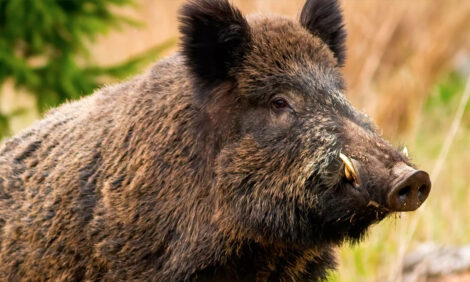



Weekly Outlook: Hog Prices Drop to Six Year Lows
US - Live hog prices fell below $40 per hundredweight last week. This means hog prices are at their lowest level since November of 2009 when the US was just beginning to pull off the bottom of the great recession. The source of the current downturn in prices seems to have components from both supply and demand, writes Chris Hurt, Department of Agricultural Economics, Purdue University.Abundant supplies of pork are easy to find. Pork production this year is up seven per cent with the number of head processed up eight per cent and weights down one per cent. There is more competition as well with per capita chicken supplies up nearly seven per cent and even per capita beef supplies are up near one per cent.
Pork and beef trade are additional culprits added to the poundage of meat in the US market this year. Total pork imports are up 15 per cent so far this year and that is primarily due to Canada sending more pork southward.
The reason is the strength of the US dollar which tends to stimulate more imports and reduce US Ag exports. Over the past year the US dollar has appreciated 18 per cent relative to the Canadian dollar.
In addition to more pork coming from Canada, the strong US dollar has also stimulated Canadian producers to ship nearly 550,000 head more live hogs in the January to September period, 15 per cent higher than the same period last year. So, while domestic pork production is up seven per cent, there is about 10 per cent more pork available when the added imports and less exports are considered. A similar impact is occurring for beef where imports are up sharply this year and exports are down.
Weakness in demand has apparently been affected by the World Health Organizations announcement around October 26 linking bacon and processed meats to cancer in humans. That announcement generated considerable media coverage in the weeks following. Just prior to that announcement, live hog prices were about $52 per live hundredweight and are currently about $38, just 4 weeks later.
Over this short period, wholesale prices for hams fell six per cent, loins were down 12 per cent and the wholesale bacon price is down 32 per cent. I also heard reports from packers that pork product sales and shipments began to immediately drop causing pork product inventories to grow at packers and thus encourage packers to drop hog bids.
Lean hog futures fell $10 to $12 per lean hundredweight on nearby delivery contracts in the three weeks after the announcement. In the past week nearby months have recovered about $4 of that decrease but remain $5 to $7 below pre-announcement levels.
What is the impact of the WHO announcement? There is likely to be a short-term and a long-term impact. In the short-run as the event is getting coverage in the broad media the impacts can be large. However, in the longer run media attention tends to drop off.
In addition, we know that announcements that suggest a negative human health impact to consumption of certain agricultural products are relatively common, which means that consumers are somewhat conditioned to them. Thus over time the issue has less of a negative impact.
In the longer run, food consumption tends to be strongly based on habit, so changes in food consumption in the entire US population tend to change slowly over a number of years. This means that consumption tends to recover after the initial shock. However if there is persistence of those messages in coming months and years, this can set in place a long term change in consumption patterns.
Estimated costs of production has dropped to near $50 per live hundredweight with the most recent reductions coming from lower soybean meal costs. Hog prices are expected to recover into the low to mid $40s in December and for much of the winter. Spring and summer prices in 2016 are expected to move upward to the lower $50s, and finish the year in the mid-to-higher $40s.
Hog production has dropped into losses with the eroding prices over the past month. Losses are expected to be $18 to $20 per head in the last quarter of 2015 and the first quarter of 2016.
Seasonally higher hog prices in the second and third quarters next year should mean profits of about $3 per head, followed by losses of $14 a head in the final quarter of 2016. For calendar year 2015 my estimates are that the industry lost about $3 per head and that losses in 2016 will be $6 to $8 per head.
There certainly is a reasonable probability that hog prices have been excessively depressed after the WHO announcement. If prices can continue to recover in coming months, this could narrow the current expected losses for next year.
Source: Farmdoc








